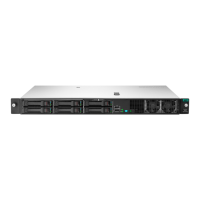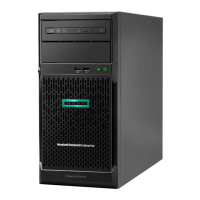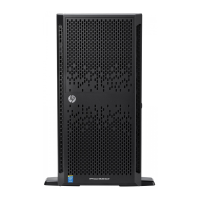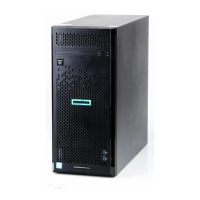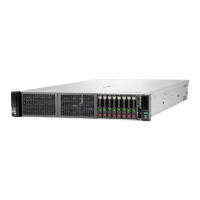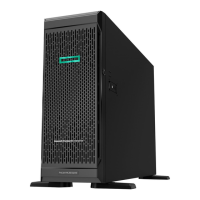5. Read the symptom/condition information in the left column of the Basic Low End Troubleshooting
Table.
6. Perform the actions specified in the Action column.
7. If you need more details, see the appropriate subsection of this chapter, where this information is
provided in the Action column. You might be directed to access and read one or more error logs (SEL
and/or FPL).
While Hewlett Packard Enterprise suggests that all users follow the recommended troubleshooting
methodology and use the Basic and Advanced Troubleshooting Tables in the next subsection, as a more
experienced troubleshooter, you might elect to go directly to the subsection which corresponds to your
own entry point of choice.
Troubleshooting entry points provides the corresponding subsection or location title for these different
entry points (for example, if you would prefer to start by examining the logs, you can go directly to the
subsection entitled Errors and reading error logs):
Table 11: Troubleshooting entry points
Entry point Subsection or location
Front panel/System Insight Display LEDs Basic and advanced troubleshooting tables on page 84
and Troubleshooting tools on page 91
System Event Log and Forward Progress
Logs
Errors and reading error logs
Offline and Online Diagnostics/INIT
button
Troubleshooting tools on page 91
System Event Analyzer Troubleshooting tools on page 91 (see also http://
www.compaq.com/support/svctools/webes/ for more
information about this tool)
Basic and advanced troubleshooting tables
The following troubleshooting tables are designed for use by both trained and untrained support
personnel. The tables are the first tools used to determine the symptoms or condition of a suspect server.
Be aware that the state of the front panel LEDs can be viewed locally or remotely (using the vfp
command from the iLO 3 MP).
The tables are designed to cover troubleshooting symptoms from AC power-on up to booting the
operating system (OS), specifically in Steps 1-5. In most cases begin with Step 1 in
Basic low end
troubleshooting, sequencing through the table steps to locate the symptom/condition most descriptive of
your current server status; this becomes the first step in your troubleshooting procedure. Where
appropriate, an action or actions prescribed in the "Action" column of Basic low end troubleshooting is
followed by a reference to the corresponding subsection of this chapter for further information.
84 Basic and advanced troubleshooting tables

